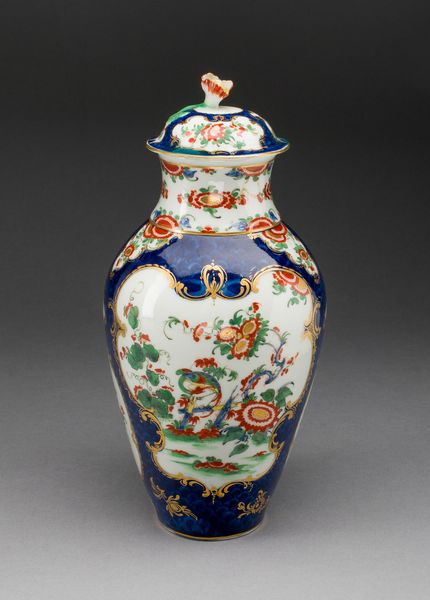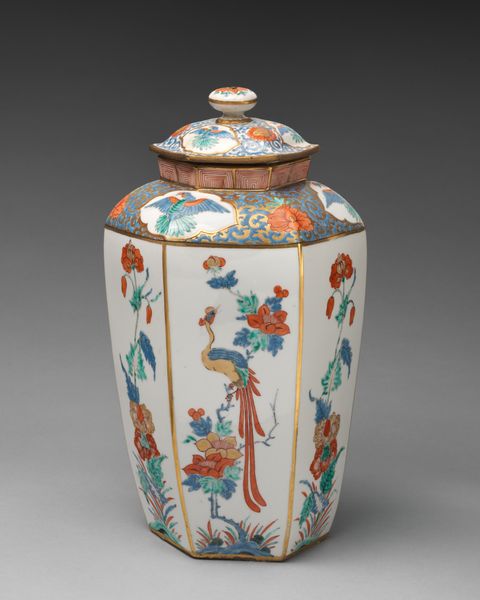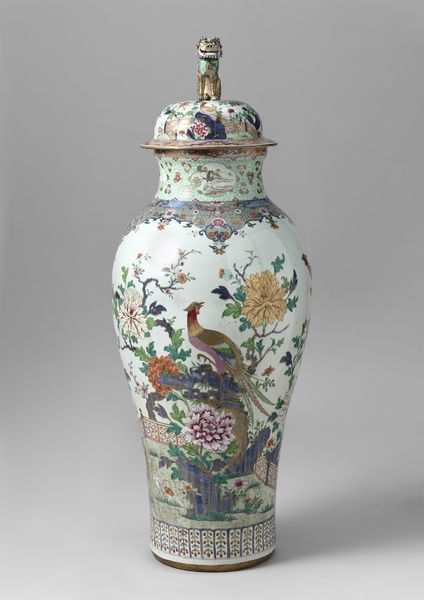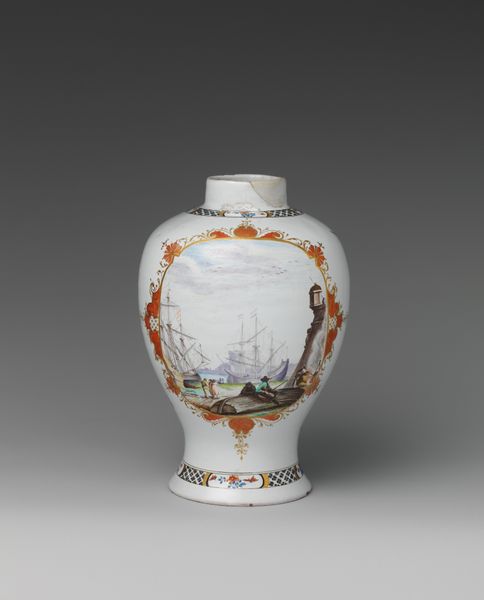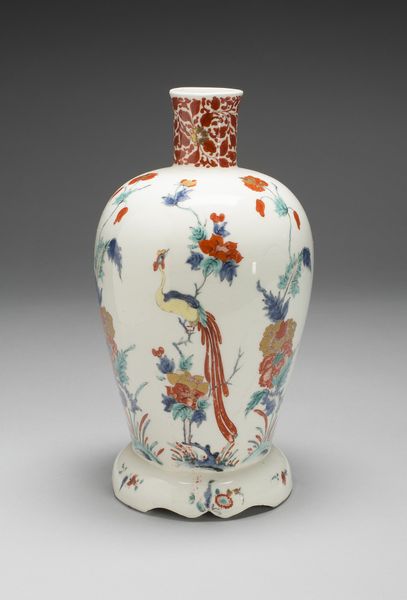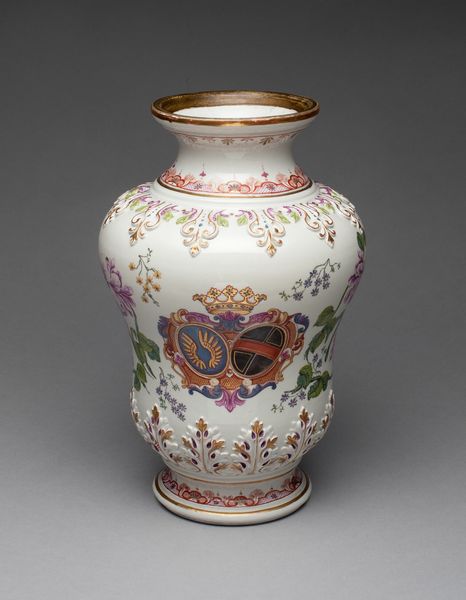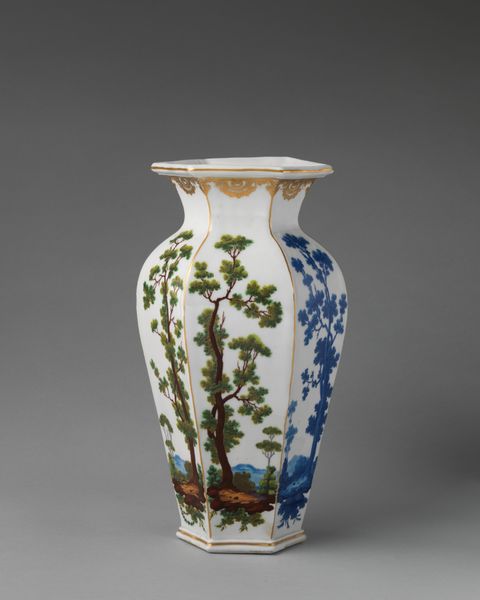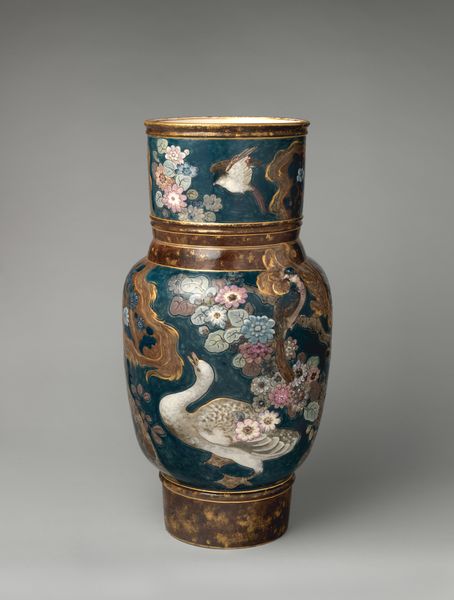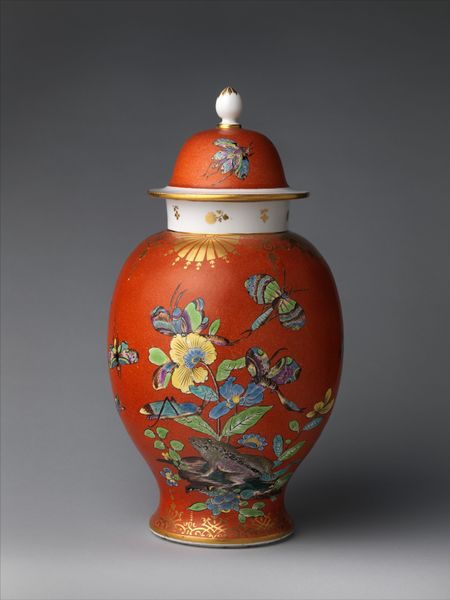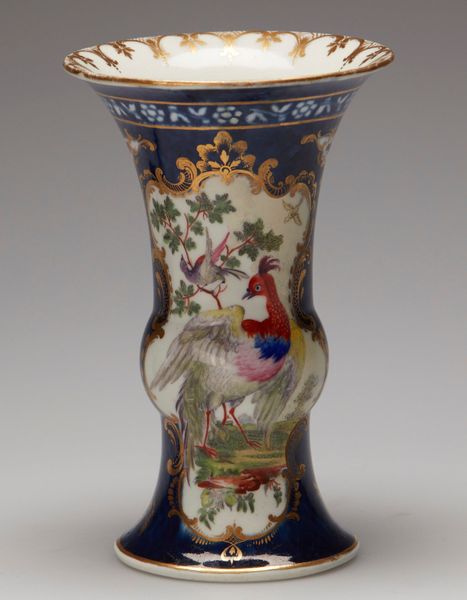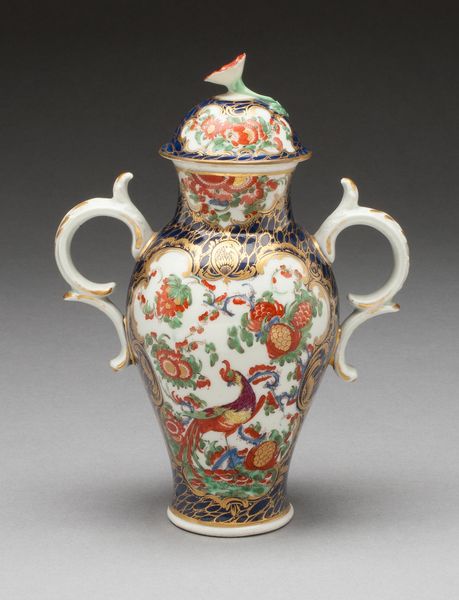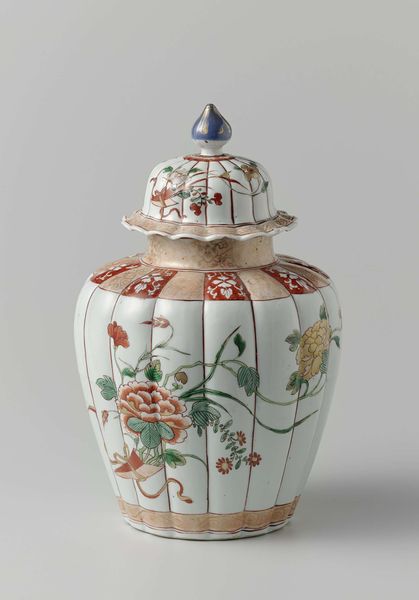
Vase with Cover (one of a pair) c. 1770
0:00
0:00
ceramic, porcelain
#
ceramic
#
vase
#
porcelain
#
figuration
#
ceramic
#
decorative-art
#
rococo
Dimensions: H. 29.2 cm (11 1/2 in.)
Copyright: Public Domain
Curator: Here we have a striking example of late 18th-century decorative arts, a covered vase produced around 1770 by the Worcester Royal Porcelain Company. Editor: It feels undeniably opulent at first glance. The rich cobalt blue, combined with the ornate floral and bird motifs, screams luxury. And, goodness, it is actually porcelain! I imagine holding something like that. Curator: Indeed. Worcester was at the forefront of porcelain production in England at the time, benefiting from access to superior raw materials and skilled labor. The company played a significant role in shaping the market for luxury goods during the Georgian era, catering to the tastes of the aristocracy and the rising merchant class. Editor: Thinking about its manufacture, one can really appreciate the craft here. The firing process alone must have been precarious. But the overglaze enameling must have demanded fine skills; the rendering of those fanciful birds with those expressive features, even the way the flowers curl! And it seems hand painted? How was it really done? Curator: Yes, each vase was hand-painted, making it unique. This points to the culture of craftsmanship which, at this time, faced challenges following mechanization, causing concerns amongst the art circles of the time about commodification and the division of labour. But let's turn our attention to the form, the Rococo style! We find those delicate scrolls, the asymmetrical designs. This speaks volumes about the prevailing aesthetic values and their role in conveying status. Editor: Exactly. And the decoration, too! While pleasing, what about its meaning? Is the presence of Chinese or Japanese influences an attempt to claim "worldliness" within elite circles? Are the laborers, as well, part of this symbol of elite control? Curator: Certainly! The use of chinoiserie motifs in European decorative arts was hugely popular. The exotic imagery appealed to the prevailing taste and demonstrated the owner's awareness of global trade and cultural trends. Editor: These decorative arts provide crucial information for exploring material conditions and historical relations, allowing the Rococo era to come to life beyond grand statements! Curator: And, by looking at this vase and pieces such as this, we better understand the networks of creation and consumption that shaped taste.
Comments
No comments
Be the first to comment and join the conversation on the ultimate creative platform.

